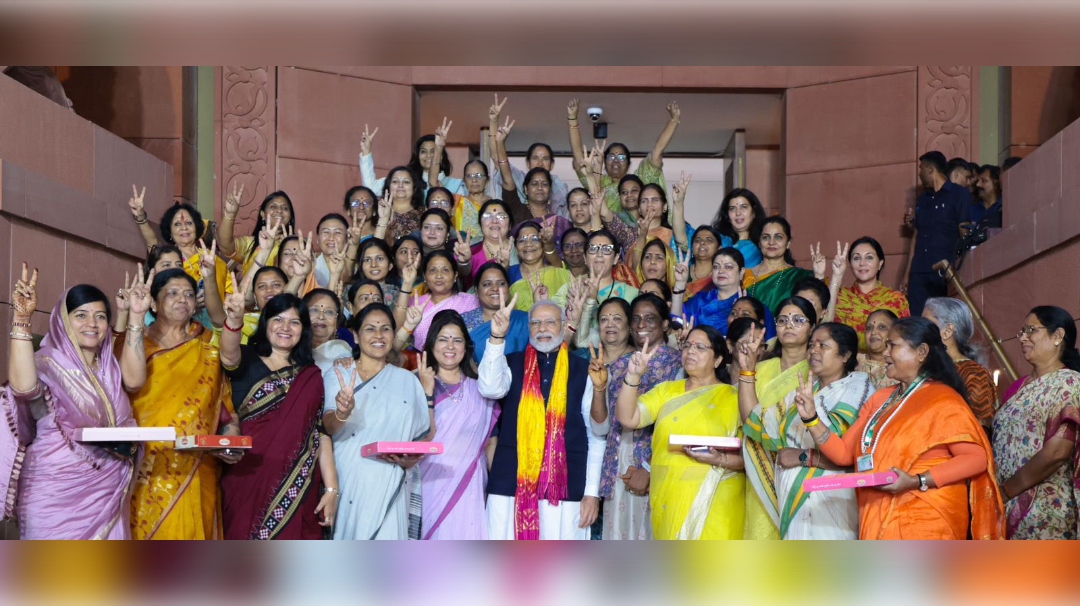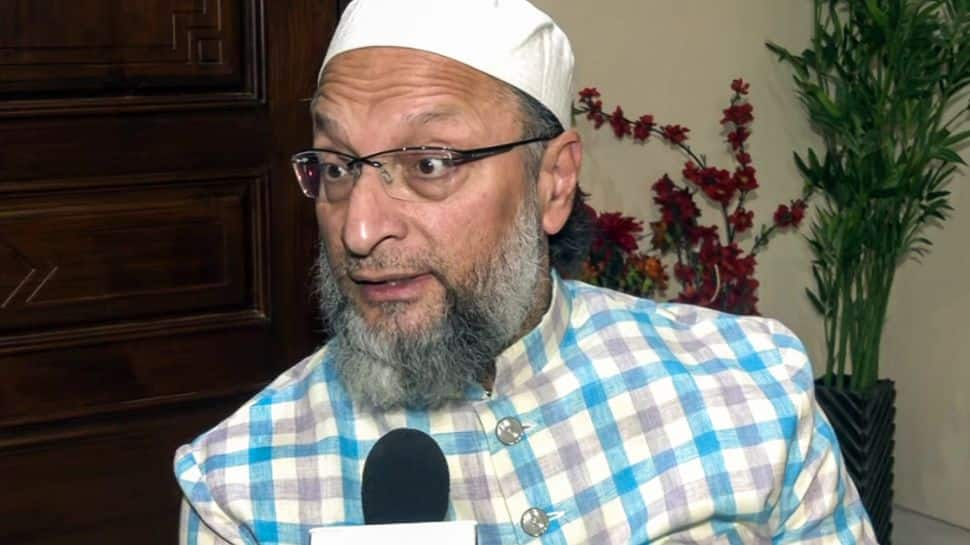BJP’s ‘Nari Shakti’ Rhetoric Faces Leadership Test Within Party | India News

New Delhi: In Indian politics, slogans often do the heavy lifting. ‘Nari Shakti’, the BJP’s rallying cry for women’s empowerment, has been a consistent part of its electoral pitch, development agenda, and cultural messaging. From schemes like Ujjwala Yojana to the push for the Women’s Reservation Bill, the party has repeatedly projected itself as a champion of women’s rights.
However, despite years of promoting ‘Nari Shakti’ as a key electoral plank and cultural identity, the Bharatiya Janata Party today finds itself in an uncomfortable position, lacking a strong, popular pan-India woman face in its top leadership or newly formed cabinet. While the Modi cabinet has seven women ministers, none of them enjoys pan-India popularity like Sushma Swaraj or other former women leaders of the party.
This apparent disconnect between rhetoric and representation hasn’t gone unnoticed. This gap has raised eyebrows among political observers, and as the 3.0 Modi-led government takes shape, a critical question arises: Where are the women?
A cabinet without prominent women
“Nari Shakti” is a powerful slogan, but slogans don’t substitute for representation. The absence of prominent female leadership highlights how women are still perceived more as support systems than leaders within the party.
This is not a new pattern. The BJP fielded around 16% women candidates in the 2024 Lok Sabha elections, a modest improvement, but still far short of the 33% goal it has publicly endorsed. Despite a strong base of women MPs (31 out of the BJP’s 240 in the 18th Lok Sabha) and growing female participation in election campaigns and grassroots politics, few women are elevated to positions of national political visibility or decision-making authority.
As per several analysts, parties field women candidates in either safe or hopeless constituencies, rarely in the crucial battleground seats. Women are mobilized during elections, but not groomed for leadership.
Experts feel the BJP’s Nari Shakti Vandan Adhiniyam Act was a mere eyewash, promising 33% reservation for women in Lok Sabha and state assemblies, but delivering a paltry 31 women MPs in 2024, a stark decline from 42 in 2019.
Experts say this is a part of a broader pattern where women are mobilized as voters and campaigners, especially in welfare schemes and outreach initiatives, but are not empowered as political decision-makers. This paradox, between women’s increasing political visibility and their absence from actual leadership, has drawn criticism.
Political Analyst Sandeep Choudhary said, “Making Droupadi Murmu the President of India, a tribal woman from a humble background, certainly sent a message to the world. But let’s not mistake representation for empowerment. Women do not become empowered merely by holding symbolic positions. Real empowerment demands structural change; women must be given real power in legislative assemblies, in ministries, in administrative authority, and in decision-making bodies where their voice is not just present, but heard and acted upon.”
“Women’s participation in politics should not be conditional upon the will or generosity of men. As long as male leaders continue to decide which woman should get a ticket, whose voice should rise, and who should be sidelined, empowerment will remain a distant dream. Women must be allowed to rise through their merit, their strength, and their vision, not based on what role the male leadership assigns them. Until then, this will not be true empowerment, but controlled representation,” he further added.
“Look at Smriti Irani, she is articulate, bold, and deeply connected to the ground realities. Yet after her defeat, she vanished from political prominence. In contrast, men like Pushkar Singh Dhami and Keshav Prasad Maurya were made Chief Minister and Deputy Chief Minister despite losing. This inconsistency shows that women are still viewed as exceptions, not equals,” Choudhary further highlighted, adding, “Today, the BJP governs many states across India, yet how many women do we see as Chief Ministers? Just one, and that too, a recent appointment of Rekha Gupta in Delhi, after the fall of the AAP government. If women truly matter in politics, why are they missing from the top posts across the country? You cannot talk about Nari Shakti while structurally excluding women from leadership roles.”
Experts feel that when capable women are ignored, it sends a message to the next generation of women that their rise will always depend on factors beyond competence.
“Slogans like ‘Beti Bachao, Beti Padhao’ and ‘Nari Shaktikaran’ are powerful, but they must translate into policies, opportunities, and representation. Until a woman can rise from the Panchayat to Parliament without systemic bias, until her ticket isn’t decided by the male high command, and until her defeat isn’t treated as final while men are resurrected, true women’s empowerment will remain a distant ideal,” he concluded.
Ground-level mobilization, but no elevation
To be fair, the BJP has effectively mobilized women at the grassroots, using self-help groups, local welfare schemes, and women-specific subsidies to cultivate strong female voter bases. In states like Uttar Pradesh and Madhya Pradesh, women played a decisive role in the BJP victories. Initiatives like the Ladli Behna Yojana and targeted welfare programs have built immense goodwill among women voters, especially in rural India.
BJP has mastered the art of symbolism when it comes to women, but that mobilization has not translated to genuine political inclusion. Women are present on the ground, not in the room where decisions are made.
This dissonance, women as voters versus women as leaders, is now becoming too stark to ignore. Reports also say that women’s representation is far lower than in many other democracies. The few women who do make it are typically from politically privileged families.
Senior Journalist Rahul Lal slammed the BJP, saying, “The BJP’s actions suggest that women’s empowerment is not a priority for the party, and that the Nari Shakti slogan is merely a publicity gimmick.”
Making his views stronger, Rahul Lal added, “Women have been marginalized in every matter in terms of representation, and it’s not an exaggeration to say that the BJP’s Nari Shakti slogan has been a mere facade. The BJP could have given more tickets to women, but they didn’t, and as a result, women’s representation in the party has taken a hit. The Saffron party’s promises of women’s empowerment have turned out to be empty promises, with no substance or action to back them up.”
Regional contrast and missed opportunities
Regional parties have offered a different model. In contrast, parties like the TMC, BSP, and even Congress have put women front and center. Mamata Banerjee, Mayawati, and Priyanka Gandhi Vadra are household names. Meanwhile, the BJP, a party with a national presence and deep organizational machinery, lacks any woman who occupies a similar national leadership space today.
What must change
Experts feel that for the BJP to credibly claim the mantle of “Nari Shakti,” it must: Elevate women into the party’s highest decision-making bodies, including cabinet committees and national executive posts. Field women candidates in winnable constituencies and train them for long-term leadership roles. Move beyond symbolism, giving women policy authority, not just campaign responsibilities, and promote internal mentorship and leadership pipelines, especially from grassroots to national politics.
Time for structural empowerment
The BJP’s messaging around “Nari Shakti” has undeniably reshaped how women voters see politics, as something accessible and participatory. But turning that participation into real representation requires more than slogans. Until women are given real power, not just portfolios but policy-shaping authority, the gap between narrative and reality will continue to grow. In an era where optics matter, substance matters more.
The question is no longer whether the BJP can mobilize women. It’s whether it is ready to be led by them.






